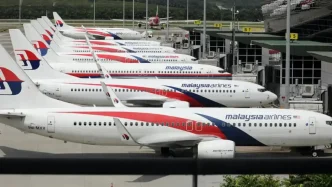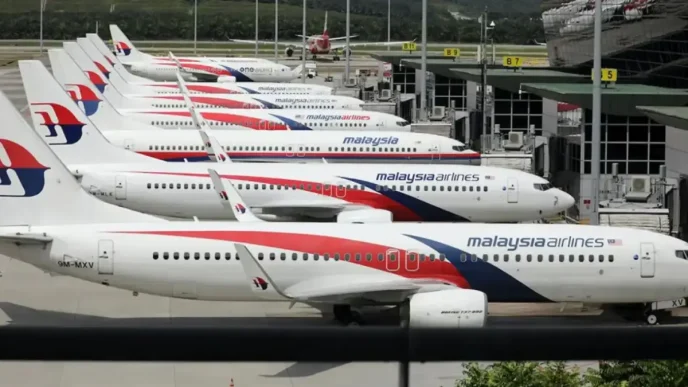The culinary world is abuzz with excitement as the Michelin Guide, the globally revered arbiter of fine dining, has officially announced its expansion into the Philippines. Set to debut in the last quarter of 2025, the Michelin Guide Manila and Environs & Cebu 2026 will spotlight the vibrant food scenes of Manila—extending to nearby areas like Pampanga, Tagaytay, and Cavite—and the tourist haven of Cebu. This marks a significant milestone for a country whose culinary landscape has long been celebrated for its rich traditions and innovative flair, yet has remained somewhat under the radar on the global gastronomic stage.
The announcement has sparked widespread speculation: which Filipino restaurants and chefs will earn the coveted Michelin stars? As the anticipation builds, this development is not just a win for the nation’s chefs but also a boost for Filipino tourism, with gastronomy poised to become a central pillar of the country’s appeal to international visitors.
A Long-Awaited Recognition
The arrival of the Michelin Guide in the Philippines has been described as a “long time coming” by industry observers. Filipino cuisine, with its deep-rooted traditions and openness to global influences, has evolved into a uniquely diverse dining culture. From the tangy adobo and hearty sinigang to modern reinterpretations by young chefs, the country’s food scene is a tapestry of flavours reflecting its history and multicultural heritage.
“Our Michelin Inspectors have been following the evolution of the Filipino culinary scene with great excitement,” said Gwendal Poullennec, international director of the Michelin Guide. “In Manila, we see young, talented chefs redefining Filipino cuisine with fresh perspectives; while Cebu, as a leading tourist destination, offers an impressive range of dining experiences with world-class hospitality.”
Poullennec’s comments highlight the dual appeal of the Philippines as a culinary destination. Manila’s dynamic food scene is increasingly driven by chefs who blend traditional recipes with contemporary techniques, while Cebu’s status as a tourist hub ensures a variety of dining options, from upscale restaurants to beachside eateries.
A Boost for Tourism and National Pride
The Department of Tourism has warmly welcomed the Michelin Guide’s entry into the Philippines, viewing it as a powerful endorsement of the nation’s culinary heritage. “We extend our warmest welcome to the Michelin Guide, whose international recognition of the Philippines’ rich culinary heritage celebrates the diversity of flavours and exceptional creativity that permeate our nation,” said Tourism Secretary Christina Garcia Frasco.
Frasco also emphasised the broader implications for Filipino tourism. “The arrival of the Michelin Guide is not only a testament to our country’s culinary excellence but also a significant leap forward for Filipino tourism, with gastronomy now forming a key part of our national tourism priorities,” she added. “In the Philippines, every dish tells a story and every flavour is an invitation to experience our nation’s rich cultural tapestry.”
This sentiment underscores the potential for food to serve as a gateway to Filipino culture, drawing travellers eager to explore the country’s dynamic cities and stunning islands through its cuisine. With gastronomy tourism on the rise globally, the Michelin Guide’s presence could elevate the Philippines as a must-visit destination for food enthusiasts.
Filipino Cuisine on the Global Stage
The Philippines has already garnered international attention through various culinary rankings, such as The World’s 50 Best and the 50 Top Pizza World, where local establishments like Crosta and A Mano have consistently placed. More recently, Filipino coffee shops have been featured among the 100 Best Coffee Shops in the World. However, the Michelin Guide’s arrival represents a new level of prestige, offering a platform to showcase Filipino talent and gastronomy to an even wider audience.
Conducted by anonymous and independent Michelin inspectors, the evaluation process is rigorous, focusing on five key criteria: the quality of ingredients, mastery of cooking techniques, harmony of flavours, the personality of the cuisine, and consistency over time and across the menu. Restaurants are awarded one to three stars, with one star signifying “high-quality cooking that is worth a stop,” two stars for “excellent cooking that is worth a detour,” and three stars for “exceptional cuisine that is worth a special journey.”
While it remains to be seen which establishments will earn these accolades, the criteria suggest that restaurants offering innovative takes on Filipino cuisine, alongside impeccable execution, stand a strong chance. The speculation over potential star recipients is already a hot topic among foodies and industry insiders alike.
Who Might Shine?
As the reveal date in late 2025 approaches, the question on everyone’s lips is: who will get the stars? Manila’s culinary scene is teeming with contenders, from fine-dining restaurants that elevate traditional dishes to fusion concepts that blend Filipino flavours with international cuisines. In Cebu, the mix of tourist-oriented establishments and local gems could yield surprising results, given the island’s reputation for hospitality.
While it would be premature to name specific restaurants without the official announcement, the Michelin Guide’s focus on creativity and consistency hints at a preference for chefs who push boundaries while honouring their cultural roots. Social media platforms are already abuzz with predictions, as food enthusiasts and critics debate which dining spots might catch the inspectors’ eyes.
A Culinary Future to Savour
The Michelin Guide’s expansion to Manila and Cebu is more than just a recognition of culinary talent; it is a celebration of Filipino identity through food. It offers an opportunity for the Philippines to cement its place on the global gastronomic map, drawing attention to the creativity, warmth, and diversity that define its cuisine.
As the countdown to the 2026 guide begins, the excitement is palpable. For chefs, it’s a chance to showcase their skills on an international stage. For diners, it promises a roadmap to the country’s best culinary experiences. And for the Philippines as a whole, it’s an invitation to the world to come, taste, and discover the stories behind every dish.














